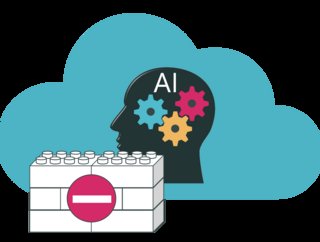RtBrick VP: Will today's networks hamper tomorrow’s AI?

Interest in AI is at an all-time high, and the intelligence requires substantial network space to process at the necessary speeds. But as Richard Brandon, VP Strategy at RtBrick explains, to reach its full potential as a tool in industries such as healthcare or disaster recovery, AI needs to be able to adapt in real-time to different situations.

How might networks be hampering the progress of AI?
Consider how we already rely on AI’s ability to manage and analyse immense amounts of data. In business, AI’s incredible processing and automation powers will become an essential tool that frees us from tedious tasks and lets us be more creative, more social. But, as a technology, AI is still young. As it matures, it will demand more and more computing power. We seem to take for granted that our traditional network infrastructure will also be perfectly able to handle all this pressure. Well, it won’t - unless it evolves too.
What sort of network infrastructure do we need?
Before we get to that, let’s look at how the human brain handles intelligence. We sometimes tend to think AI is smarter than us, but it’s easy to forget that our brains can process an equally impressive network of cognitive, emotional, and dynamic information. Interestingly, our brain is also limited by the size of our neural networks.
A second, equally important aspect of our intelligence is our ability to receive and process new information from our surroundings. Our brains are constantly bombarded with massive amounts of complex sensory information, or Input and Output (I/O) capacity, if you want to imagine it in computing terms.
The thing is, AI is still relatively young as a technology, and so, as it matures, it’ll want to scale in both of these dimensions.
Is a stronger network needed to support it as it scales?
Exactly. Especially when we consider time-sensitive applications. Right now, a significant portion of AI use-cases are centred around learning processes such as the assimilation of language, correlation of medical symptoms and causes, or financial pattern observations. These tasks are heavy users of ‘processing and storage’ and are rarely time-sensitive. They are unlikely to stress the input/output capacity, even if the compute and storage resources in the data centre or AI-cloud still need to connect if you want to scale.
However, everything changes when AI needs to adapt to real-time situations. And if we want AI to reach its full potential, especially in cases such as disaster recovery and emergency healthcare, it needs that adaptability. Using a real-world example, AI has the potential to process and compare virology reports and patient symptoms from anywhere in the world, meaning it could identify and track potential pandemics before they spiral out of control. Or it can analyse seismic activity, using the data to predict earthquakes. Or cybersecurity activity, to map vulnerability and predict attacks. The list goes on.
Why can’t our networks support this now?
These scenarios require more network capacity than we currently possess, meaning we’ll need to upgrade to keep pace with the core computing power of AI’s near-future brain. And we’re not talking about the network capacity of data centres or from one data centre to another, but the capacity going out to individuals and devices on the network’s edge. In other words, mobile and broadband networks.
These networks are far from ready for AI’s growth, and the only way to solve that will be to either upgrade the networks or shackle AI’s development.
So, while experts are warning against the dangers of AI or promoting its positives, it’s a bit of a moot discussion until we do something about our network capacity. Unless we do something soon, we’ll have a super-advanced AI that will run far below its potential.
******
For more insights into the world of Mobile - check out the latest edition of Mobile Magazine and be sure to follow us on LinkedIn & Twitter.
Other magazines that may be of interest - Data Centre Magazine.
Please also check out our upcoming event - Cloud and 5G LIVE on October 11 and 12 2023.
******
BizClik is a global provider of B2B digital media platforms that cover Executive Communities for CEOs, CFOs, CMOs, Sustainability leaders, Procurement & Supply Chain leaders, Technology & AI leaders, Cyber leaders, FinTech & InsurTech leaders as well as covering industries such as Manufacturing, Mining, Energy, EV, Construction, Healthcare and Food.
BizClik – based in London, Dubai, and New York – offers services such as content creation, advertising & sponsorship solutions, webinars & events.






